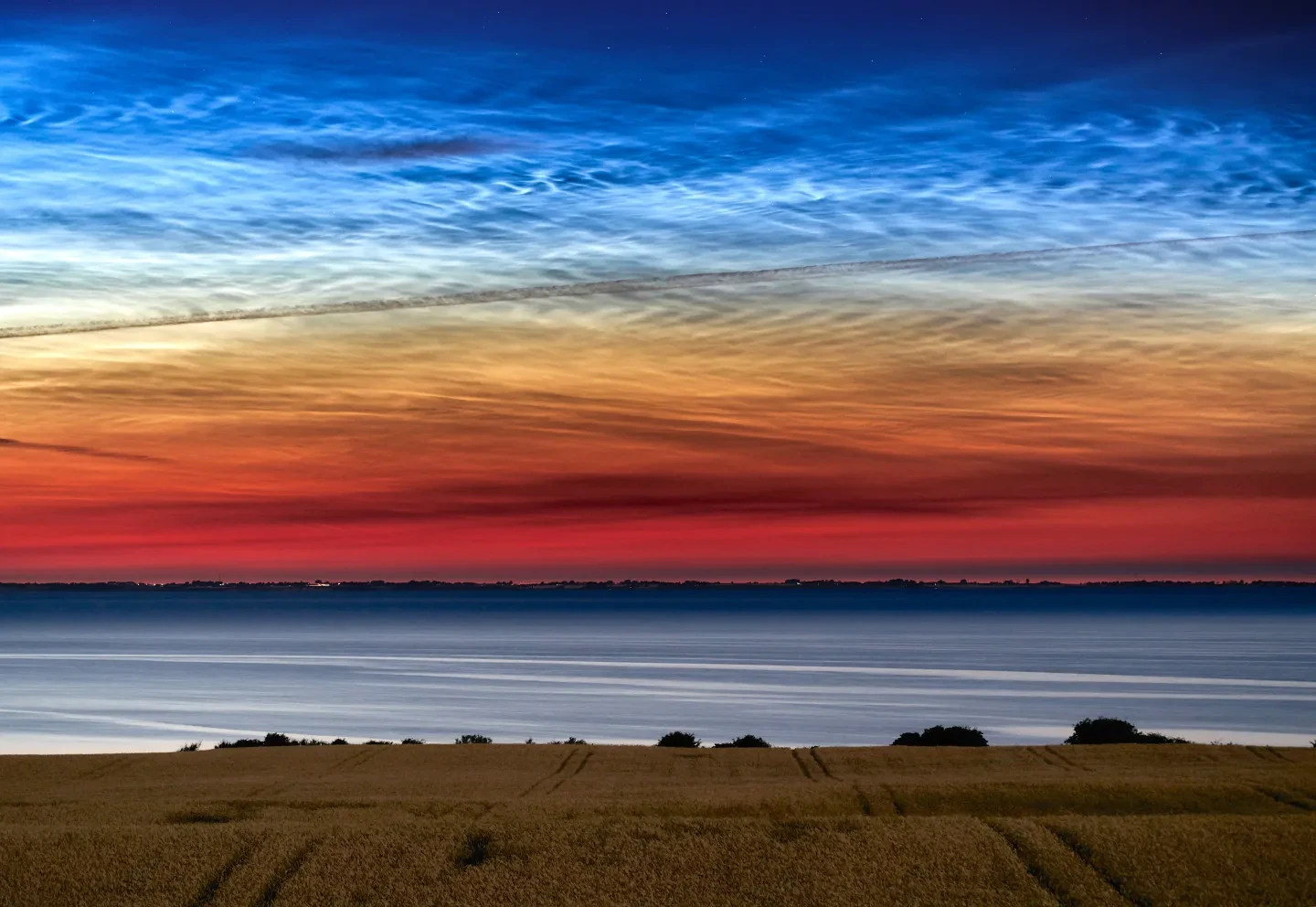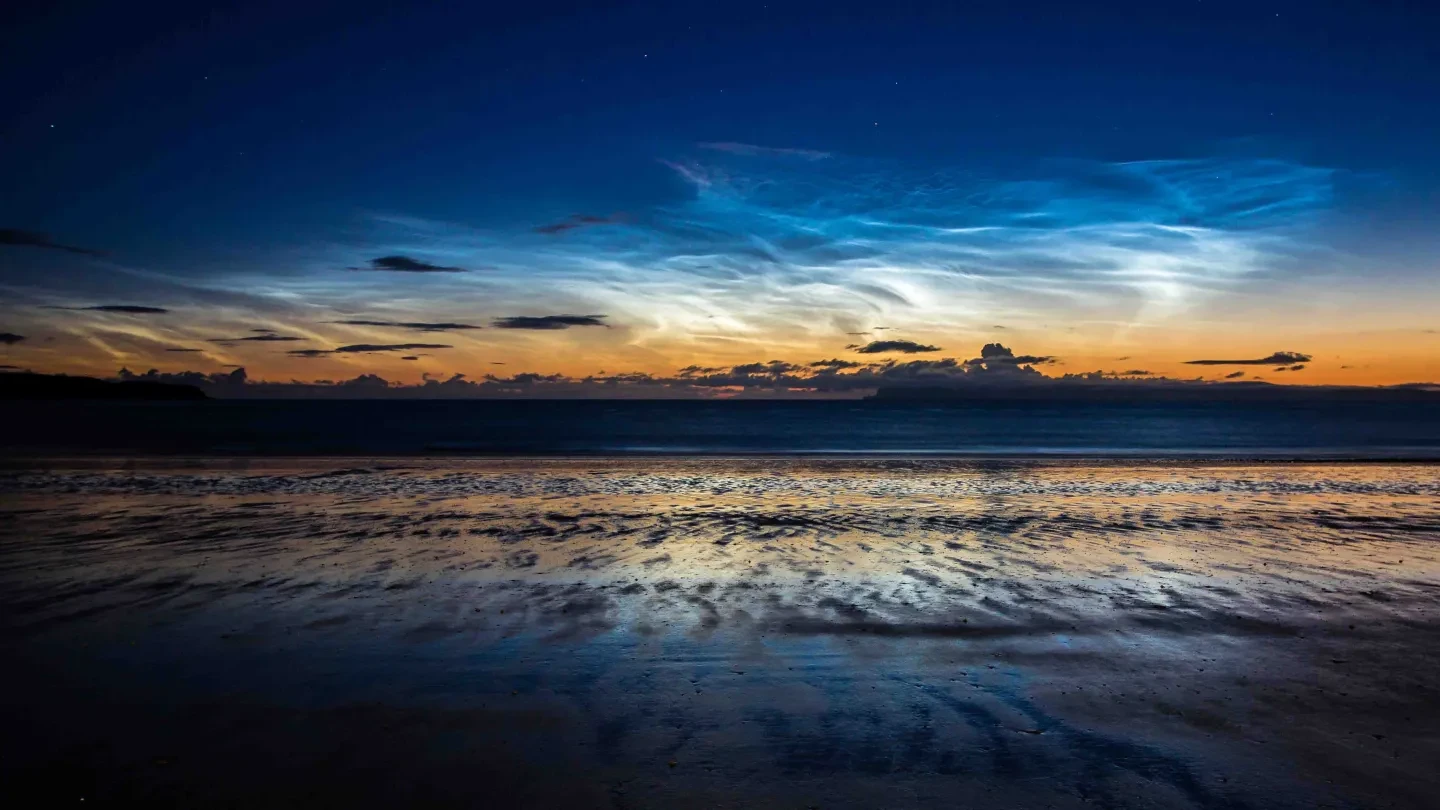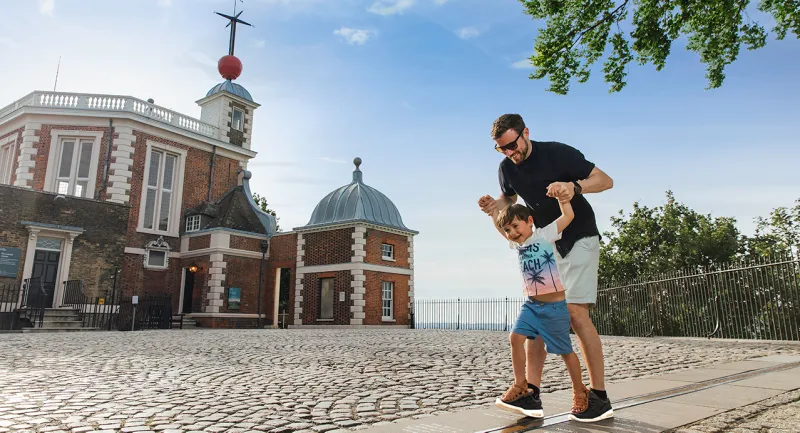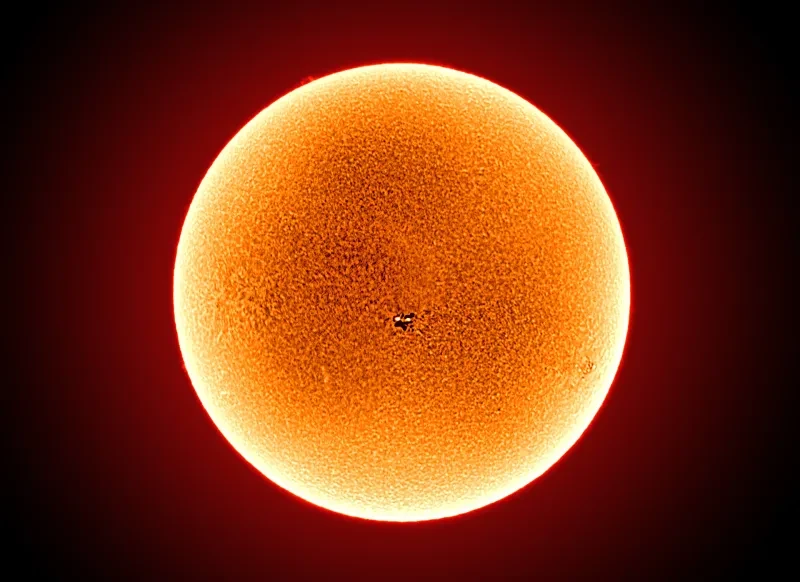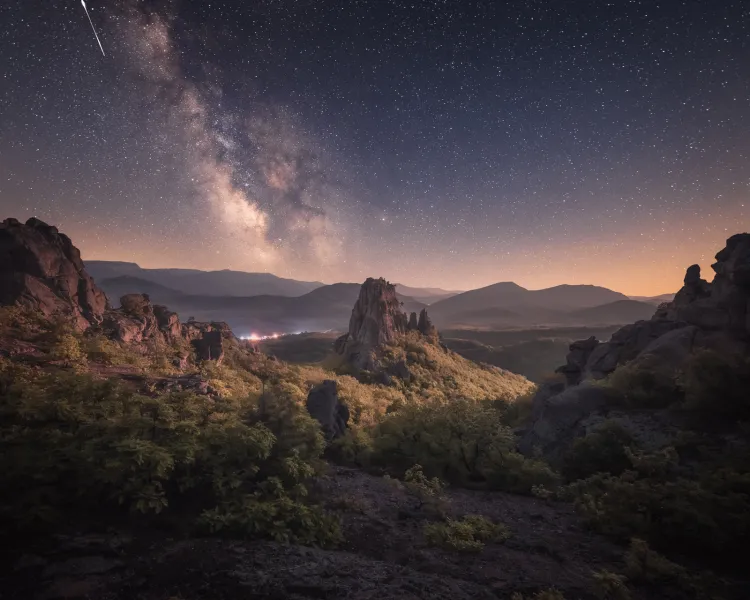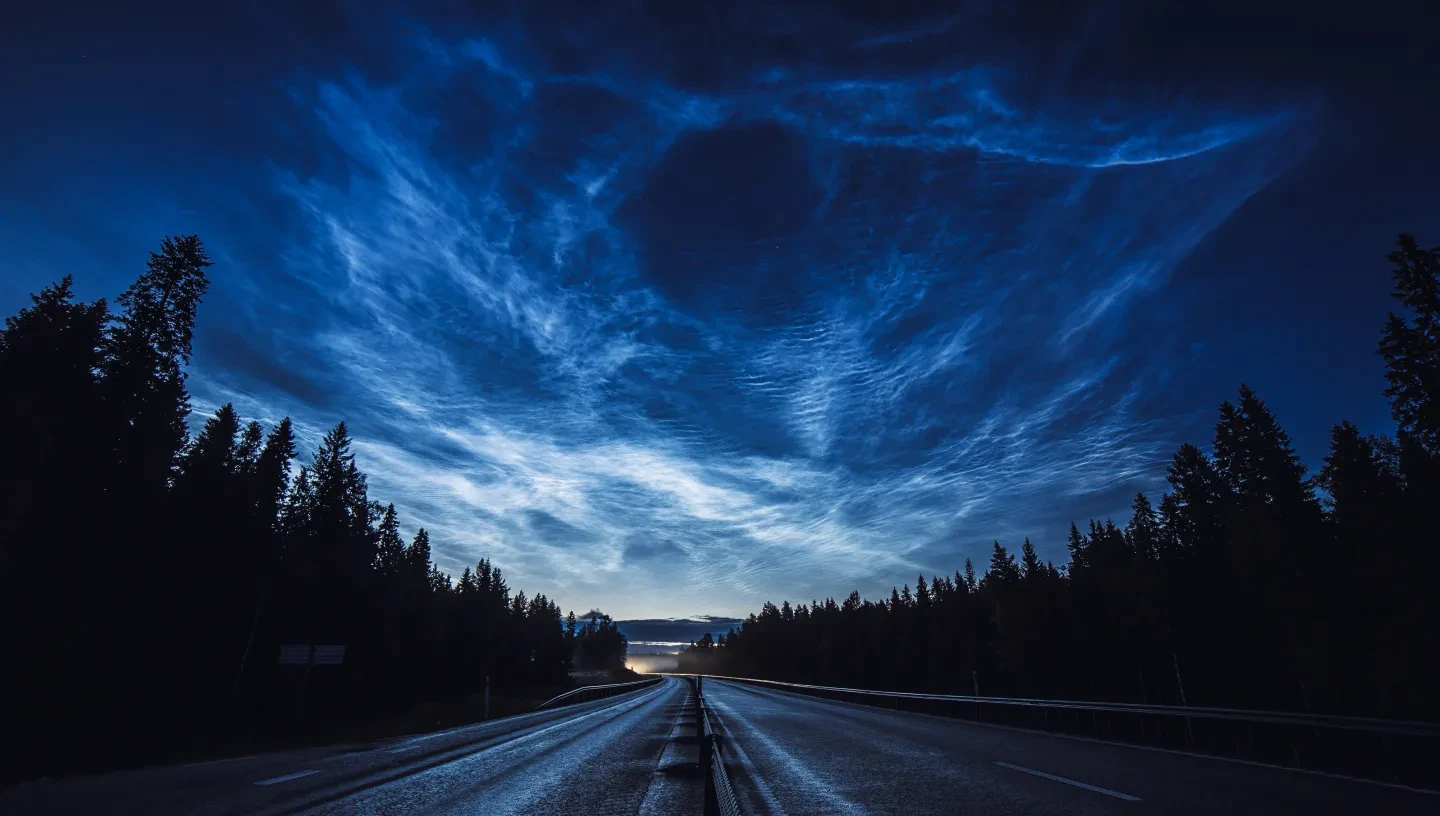
Have you ever looked up at the night sky and seen clouds that seem to shine in the darkness?
These are known as noctilucent clouds, and they are a rare and beautiful phenomenon that occur very high up in our atmosphere.
Noctilucent means 'night-shining'. As the name suggests, noctilucent clouds are most commonly observed during the late evening or early morning hours, when the Sun is below the horizon but still illuminating the nighttime clouds.
Find out what noctilucent clouds are, how they're formed and how to spot them for yourself with the Royal Observatory Greenwich.
What are noctilucent clouds?
Noctilucent clouds are thin, wispy clouds that glow with a blue or silvery hue at night when illuminated by sunlight from below the horizon.
They are the highest clouds in our atmosphere, forming in the layer known as the mesosphere around 80 kilometres (50 miles) above the Earth's surface.
Noctilucent clouds only appear during the summer months, and only at latitudes between about 45 and 80 degrees north or south of the equator (which includes the UK).
In the Northern Hemisphere, they can appear from the end of May to the beginning of August, with sightings more likely during June and July. In the Southern Hemisphere noctilucent cloud sightings are much rarer, but they can be visible from the end of November to the beginning of February, with sightings most likely during December and January.
In these months and at the right latitudes, the Sun only just sets below the horizon at nighttime. That means these very high clouds can still be lit by bright sunlight from below, even though the rest of the surface is in darkness – making the clouds appear to glow.
The Sun sets increasingly less below the horizon the further north you go, which means northern latitudes will experience noctilucent clouds for longer during the night.
Recently however, in the Northern Hemisphere noctilucent clouds have been seen at much lower latitudes than expected. Scientists believe this is a result of climate change, but it could also be due to other factors, such as rocket launches expelling particles into the atmosphere which go on to form noctilucent clouds.
How are noctilucent clouds formed?
Noctilucent clouds are formed of ice crystals; in the summer the mesosphere becomes cold enough to allow ice to form on suspended dust particles floating in the atmosphere.
The dust particles may originate from micrometeorites falling to Earth from space, or the dust left over from volcanic eruptions. Humans have also accidentally seeded our own noctilucent clouds through the exhausts of rockets propelled into space.
The ice crystals that form reflect the sunlight when the Sun hits them from below, causing the clouds' characteristic shimmer.
Interestingly, Earth may not be the only place where this stunning sight occurs. Very similar clouds were reported on Mars during the European Space Agency's Mars Express mission in 2006.
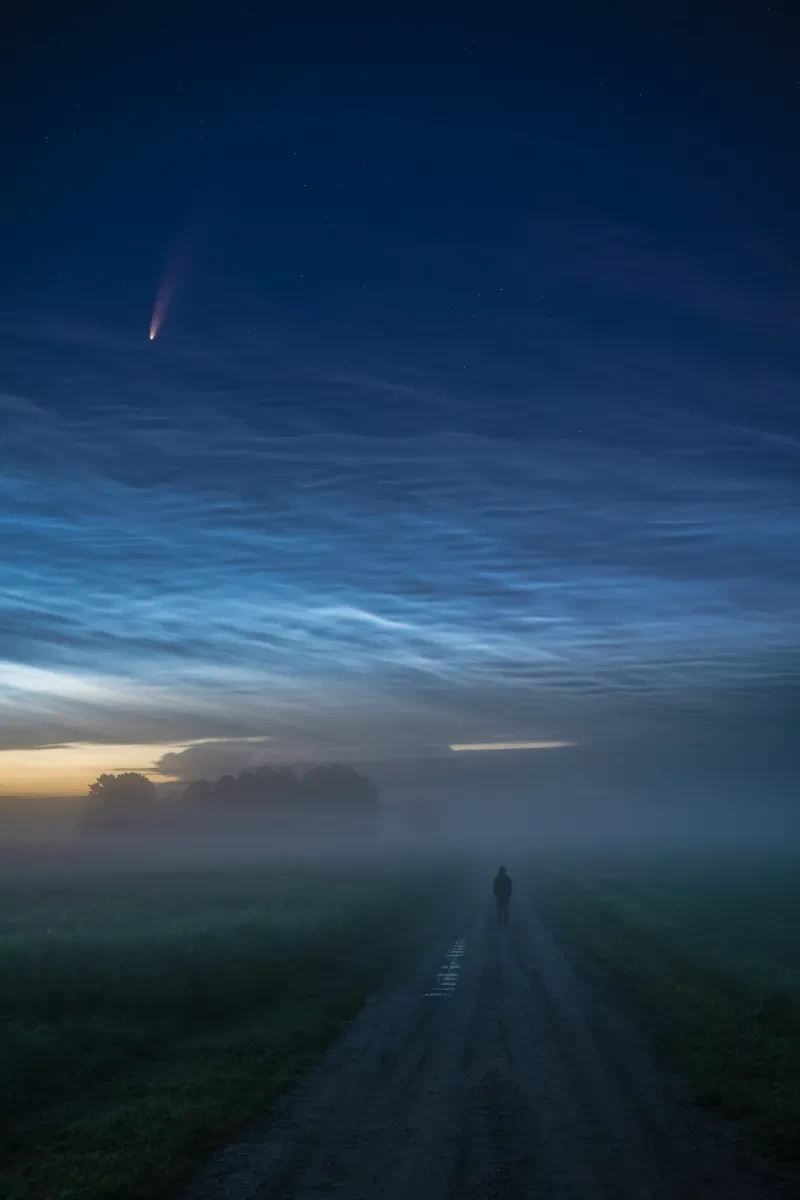
How to see noctilucent clouds
If you find yourself in a location where noctilucent clouds are known to appear at the right time of year, observing and photographing them can be a unique experience.
Although the occurrence of these clouds is unpredictable (they're often only predicted a few hours before they appear), there are ways you can give yourself the best chance of seeing noctilucent clouds.
Look up an hour or two after sunset or before sunrise from somewhere with a flat horizon and a clear view of a wide patch of sky.
In the evening, look west around 40 minutes after the Sun has set.
In the early morning, look towards the northeast where the Sun will soon be rising, and aim your gaze high up in the sky.
Many cloud watchers will post on social media if they sight noctilucent clouds; searching for relevant hashtags on Twitter for example can alert you of local sightings.
Image: Into Blue Hour © Jānis Paļulis, shortlisted in Astronomy Photographer of the Year 2021
Share your noctilucent cloud photos
Nocticulent clouds are pretty much the only form of cloud astronomers actually like to see!
Each year, many stunning photos of noctilucent clouds are submitted to the Astronomy Photographer of the Year competition.
Have you taken a great photo of these ethereal clouds? Send it to us @ROGastronomers, post it to our Royal Observatory astrophotography Facebook group, or keep your eyes peeled for when entries to the next Astronomy Photographer of the Year competition open.
You can see more photos of noctilucent clouds shortlisted in the competition in previous years below.
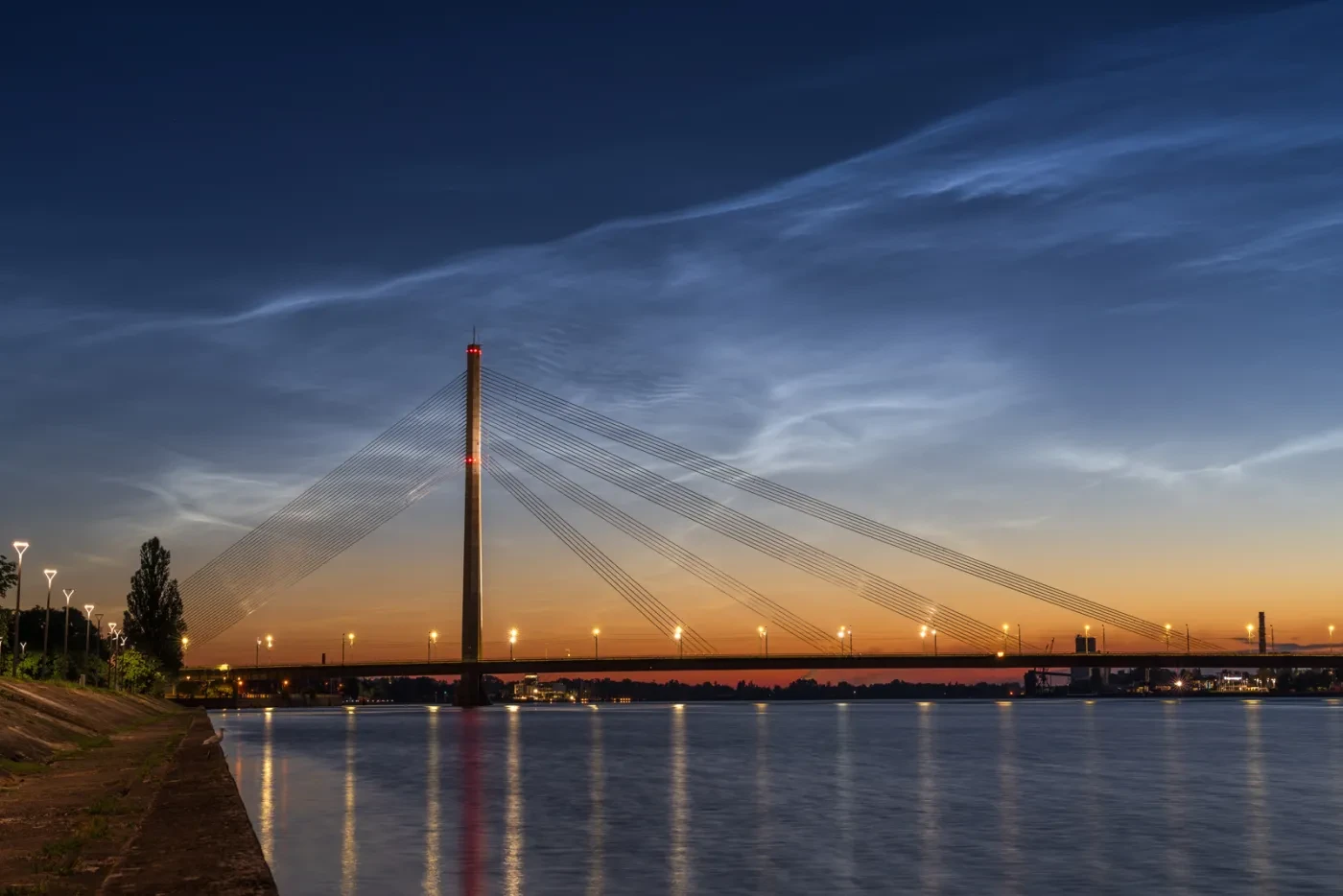
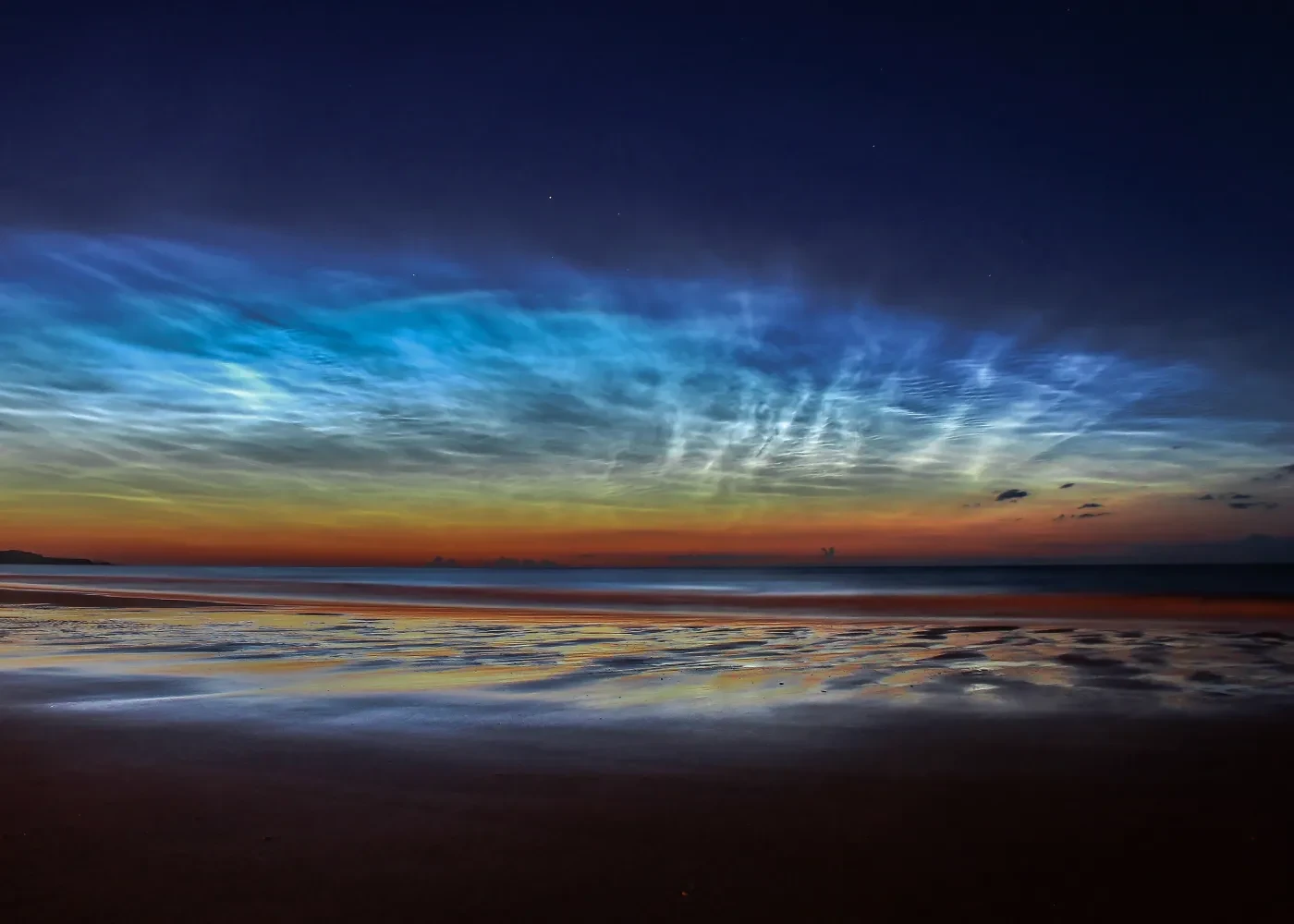
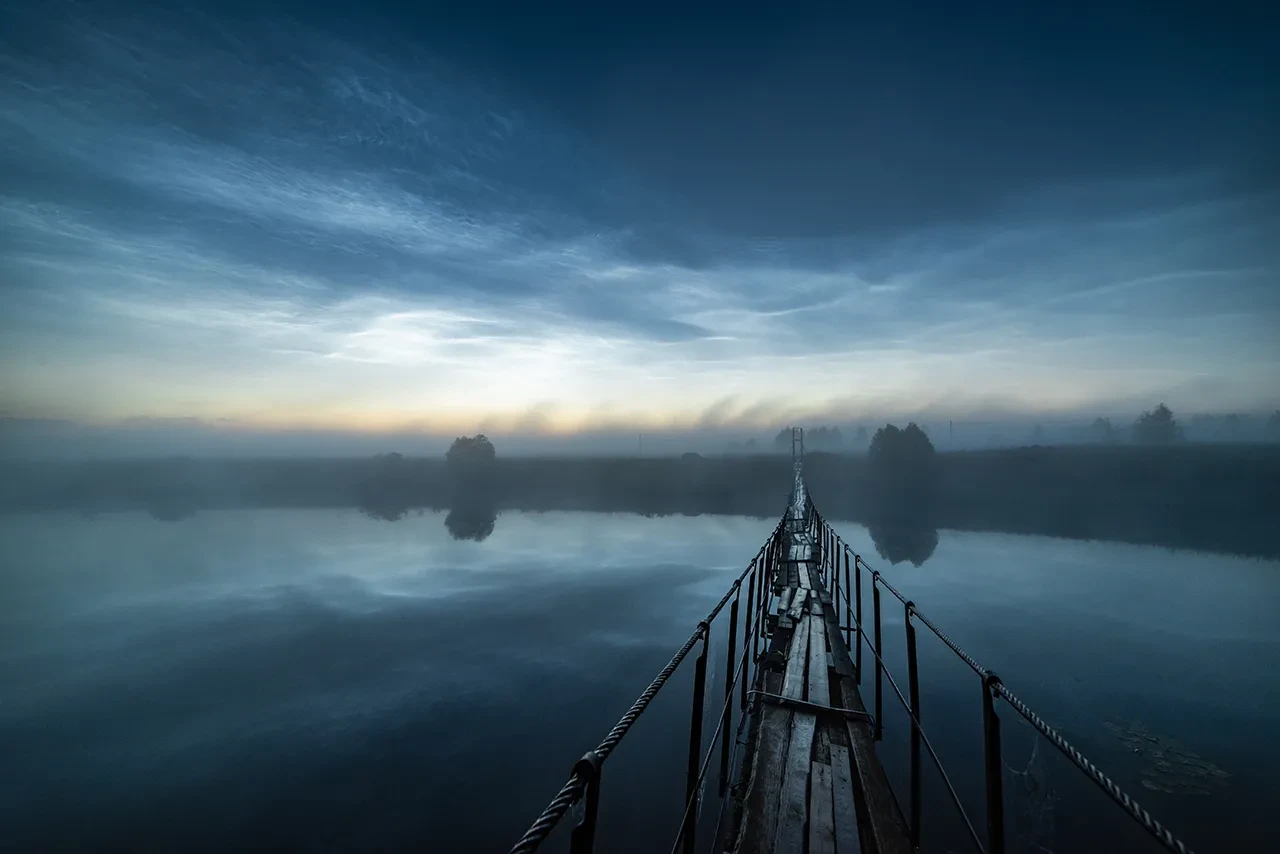
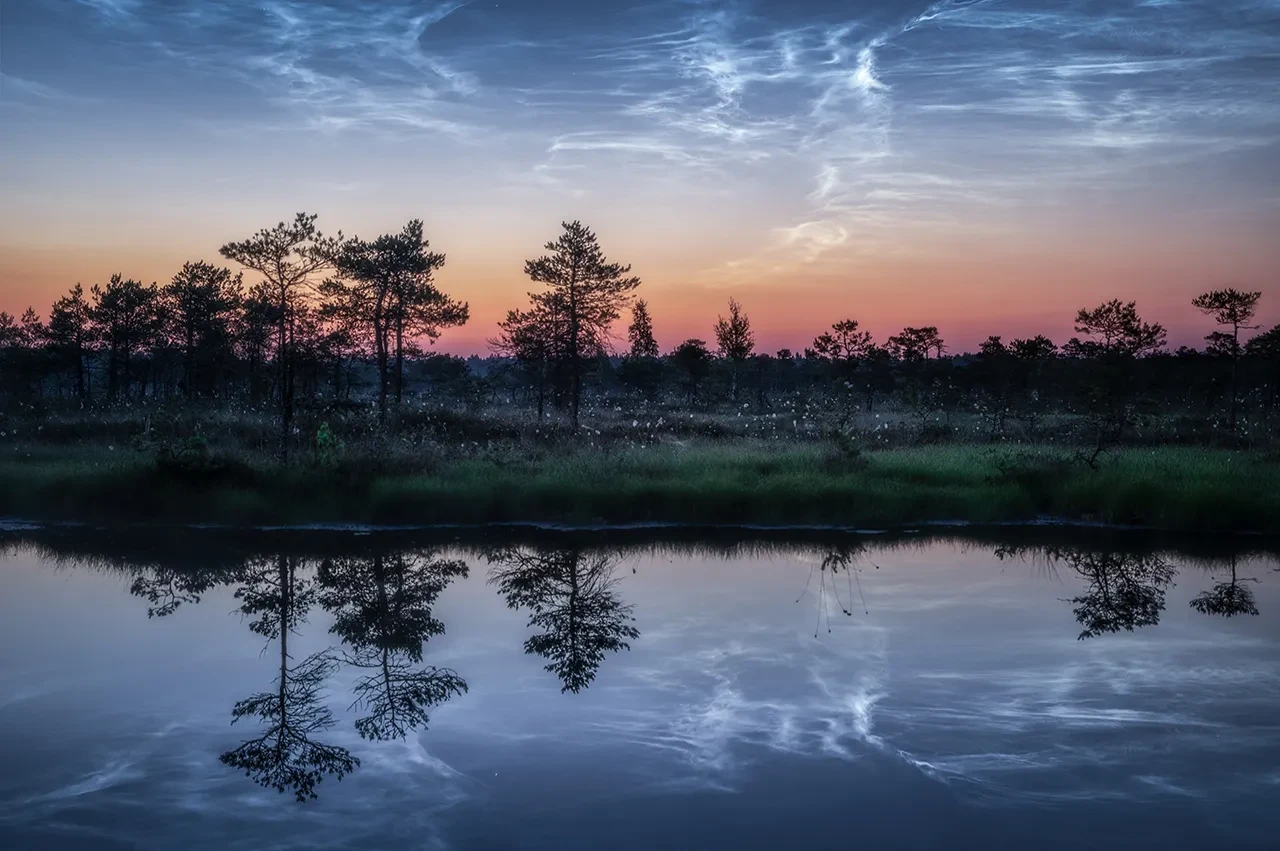
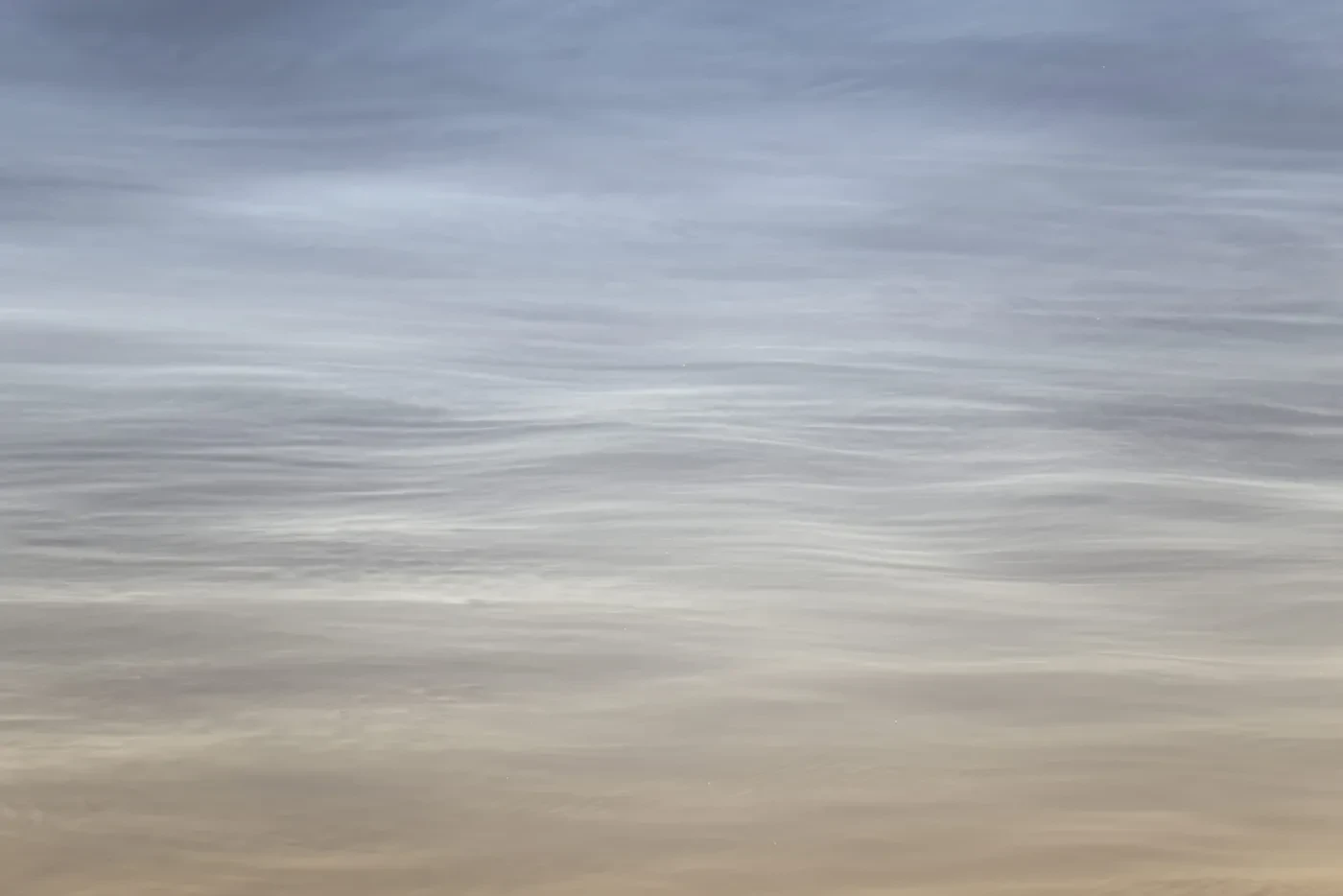
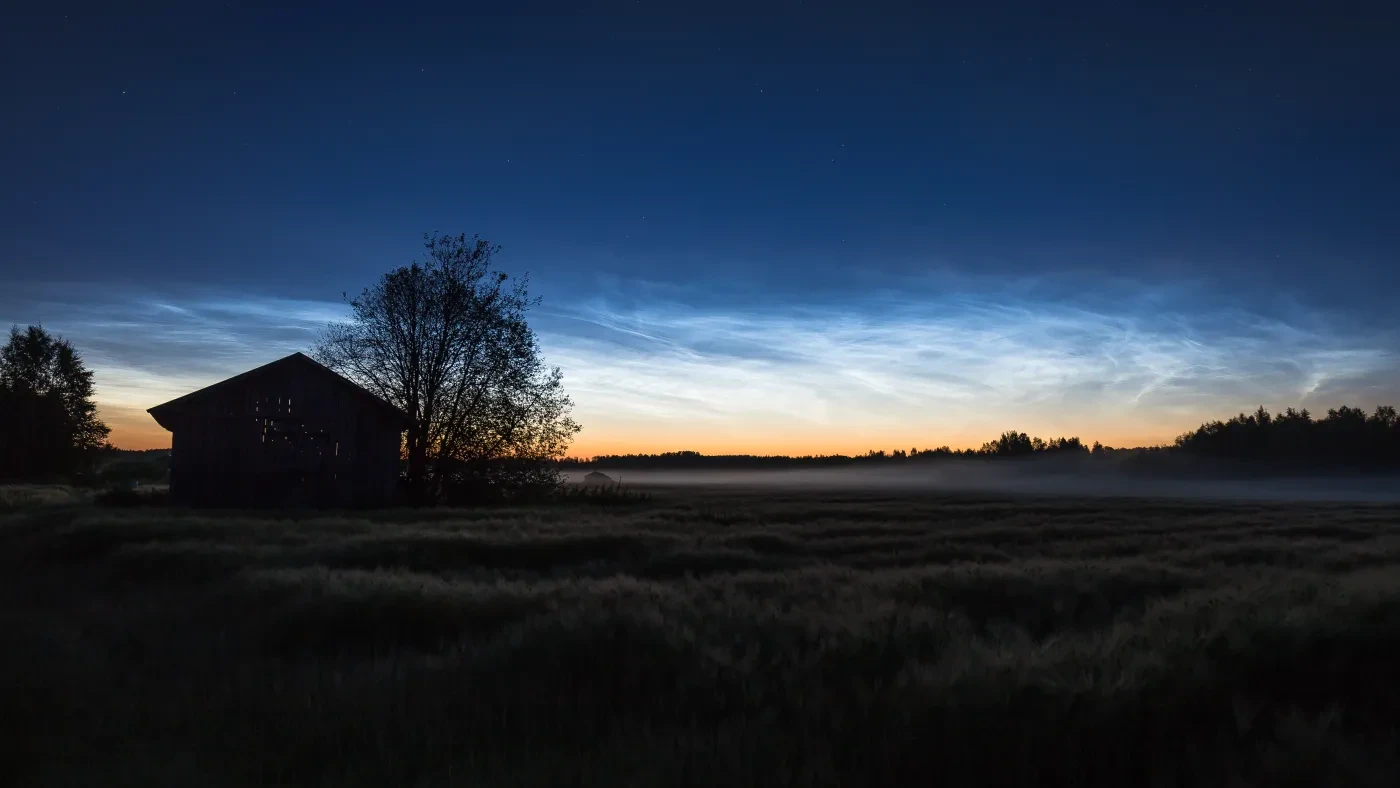
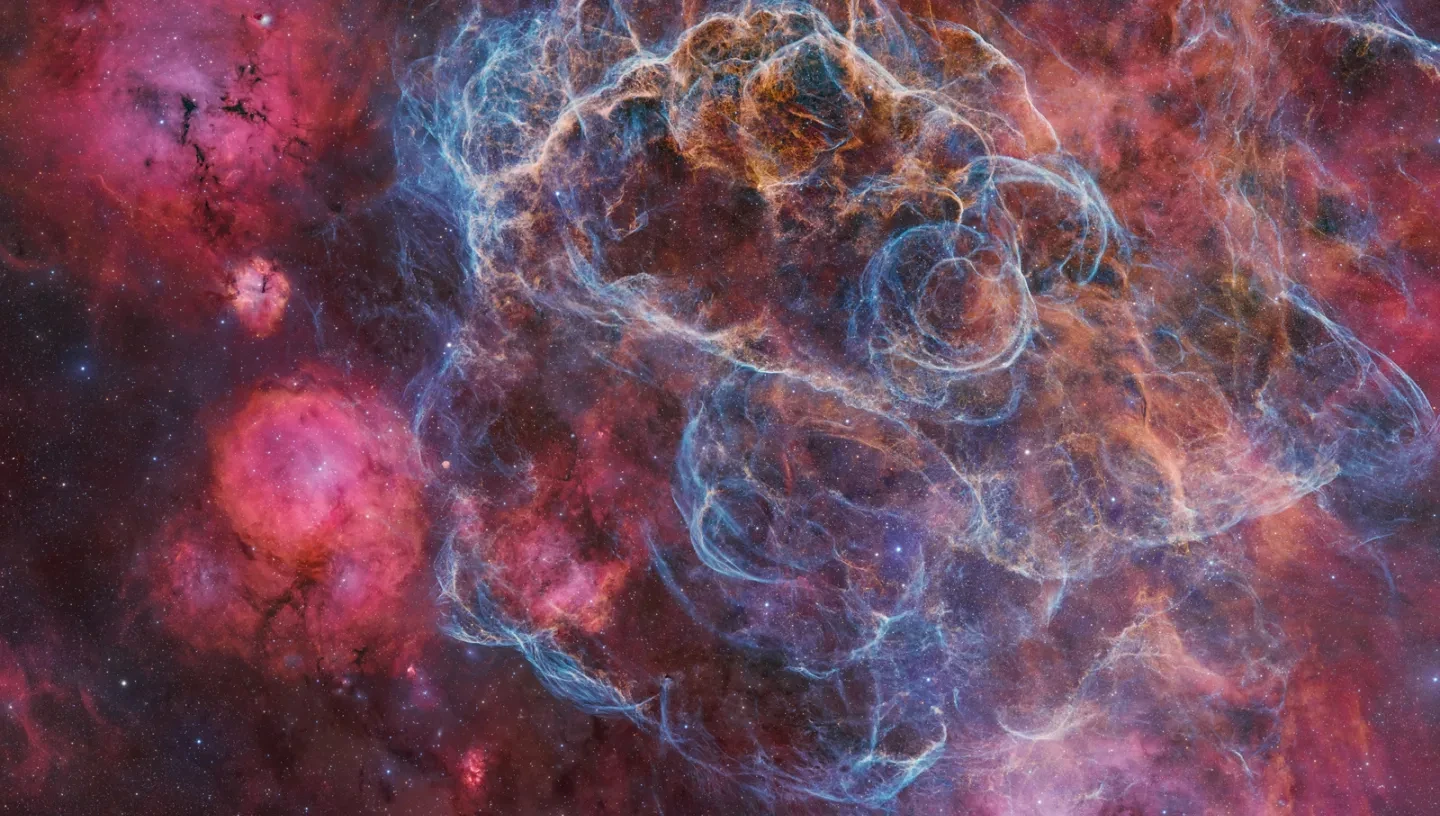
Visit Astronomy Photographer of the Year
Header image: The Road Back Home © Ruslan Merzlyakov, shortlisted in Astronomy Photographer of the Year 2017
